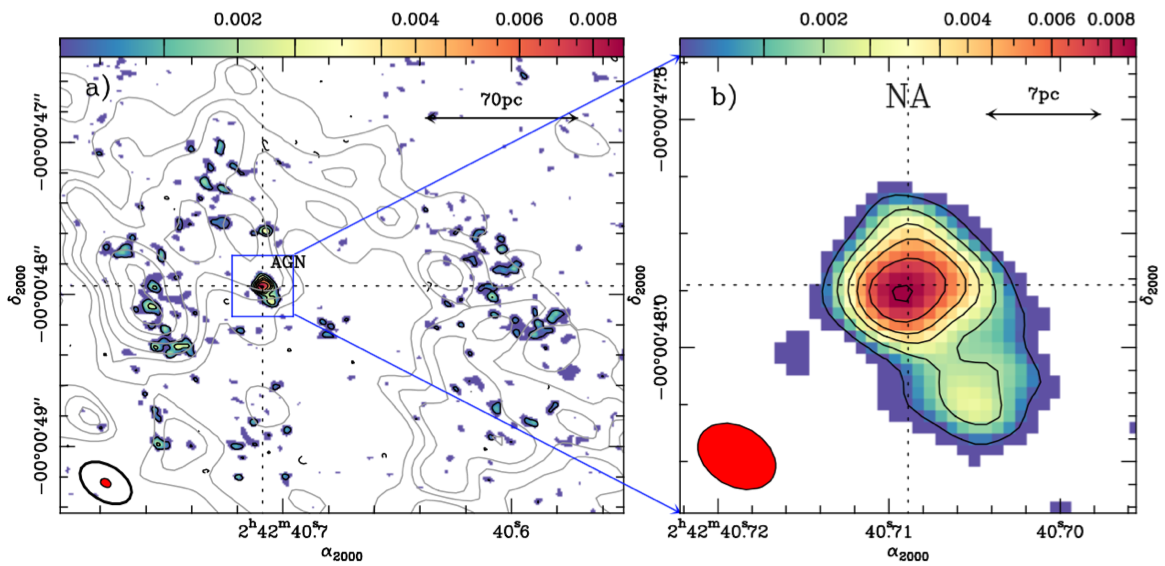
The dust continuum emission at 694 GHz mapped by ALMA in the circumnuclear disk of NGC1068. See García-Burillo et al. 2016 for further details.
An international team of astronomers lead by the spanish astronomer Santiago García-Burillo (OAN, Madrid), and with the participation of CAB scientists (Almudena Alonso Herrero and Luis Colina), have been able to resolve for the first time the dusty torus around the massive black hole in the nucleus of the nearby active galaxy NGC 1068.
Using the exquisite sensitivity and angular resolution provided by the ALMA interferometers, the scientists mapped the gas and dust emission around NGC 1068 nucleus, imaging their structure with a resolution of 4 pc. The data established a total gas mass of about 105 solar masses for the torus and a radius of 3.5 ± 0.5 pc. An unexpected result was to discover the presence of strong non-rotational motions, a surprisingly slow rotation and enhanced turbulence pointing to a complex kinematics, much more than expected. A full account of the results can be found in Garcia-Burillo et al. 2016, ApJ, 823, L12
Links
